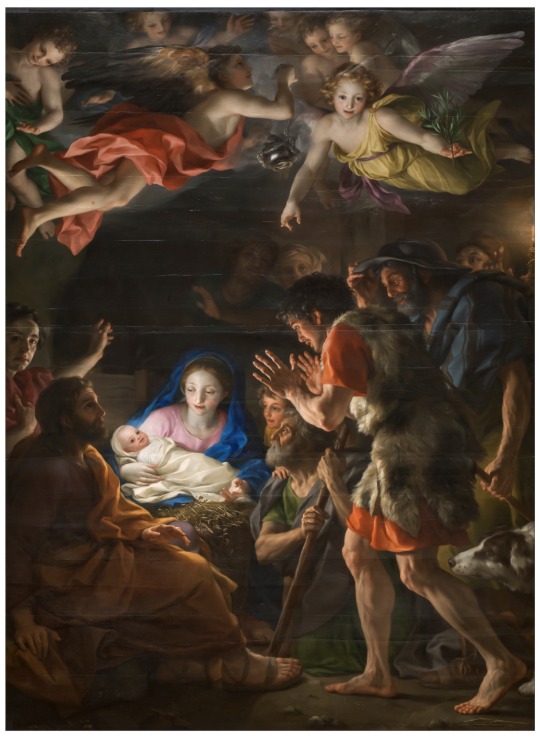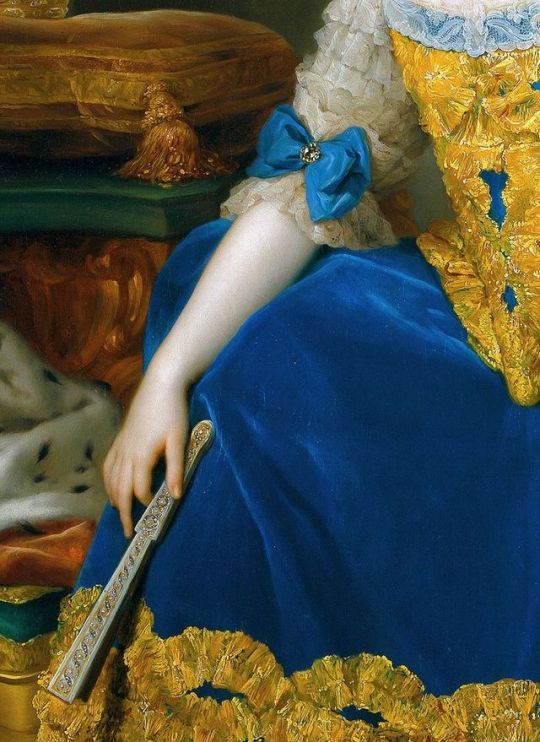#anton rafael mengs
Photo

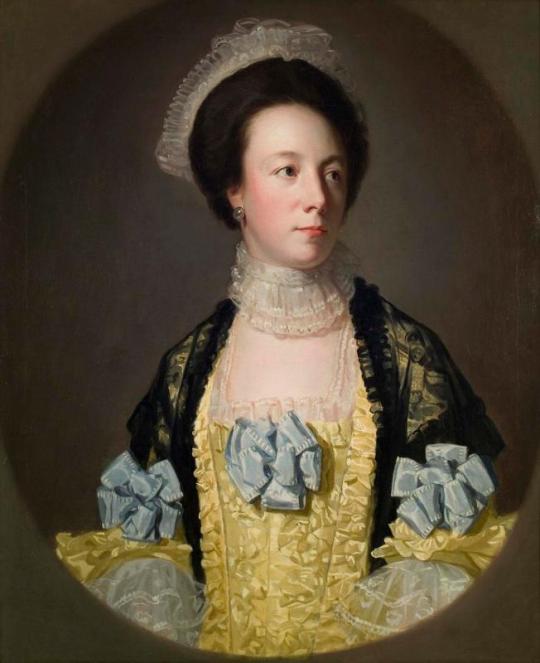
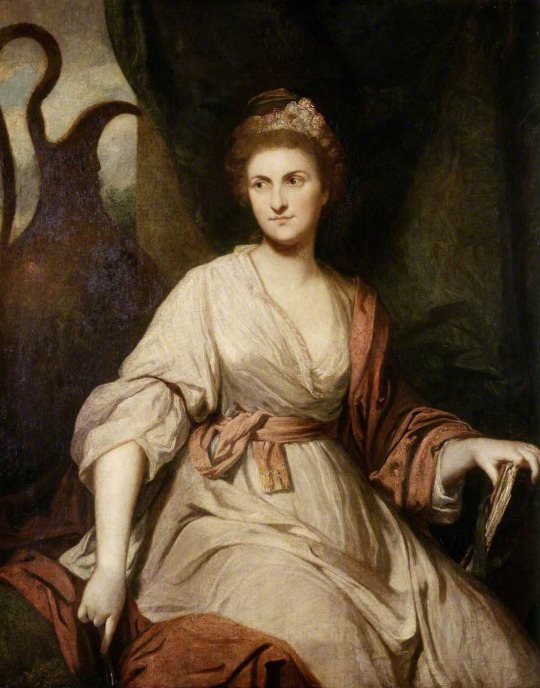






Around 1765 -
Top: ca. 1765 Archduchess Marie Christine by Meister der Erzherzoginnenportraits attributed to Martin van Meytens (Schloss Schönbrunn - Wien, Austria). From Wikimedia; blurred background w Pshop 1394X1772 @300 647kj.
Second row left: ca. 1765 Elizabeth Leigh by George Romney (Huntington Library, Art Collections and Botanical Gardens - San Marino, California, USA). From their Web site via pinterest.com/christinakupke/portrait/ 652X800 @72 107kj.
Second row right: 1763-1765 Diana Beauclerk, née Spencer by Sir Joshua Reynolds (Kenwood House - London, UK). From hmn.wiki/sk/Lady_Diana_Beauclerk 1280X1628 @72 466kj.
Third row: ca. 1765 Maria Luisa of Parma, Princesa de Asturias by Anton Rafael Mengs (Museo del Prado - Madrid, Spain). From their Web site 2201X3051 @72 2.1Mj.
Fourth row left: ca. 1760-ca. 1765 (between) Kurfürstin Elisabeth Augusta von der Pfalz by Heinrich Carl Brandt (Kurpfälzisches Museum - Heidelberg, Baden-Württemberg, Germany). From Wikimedia 1000X1422 @500 373kj.
Fourth row right: ca. 1765 Elisabeth Christine vor Schönhausen by Frederic Reclam and Joachim Martin Falbe (Schloss Schönhausen - Berlinn, Germany). Probably from Wikimedia 2235X2650 @300 1.4Mj.
Fifth row: ca. 1765 Maria Luisa of Parma by Giuseppe Baldrighi (Galleria Nazionale - Parma, Emilia Romagna, Italy). From Wikimedia 981X1356 @190 1.3Mj.
Sixth row left: 1763-1765 Woman with a rose by Thomas Gainsborough (British Museum - London, UK). From Wikimedia 1999X2811 @72.
Sixth row right: ca. 1765 Lady Caroline Hervey attributed to Johann Zoffany (The Rotunda, Ickworth - Horringer, Suffolk, UK). From artuk 1414X1894 @144 4Mp.
#1760s fashion#Rococo fashion#Georgian fashion#Louis XV fashion#Archduchess Marie Christine#Martin van Meytens#Elizabeth Leigh#George Romney#Diana Beauclerk#Diana Spencer#Joshua Reynolds#Maria Luisa of Parma#Anton Rafael Mengs#Elisabeth Augusta von der Pfalz#Heinrich Carl Brandt#Elisabeth Christine vor Schönhausen#Frederic Reclam#Joachim Martin Falbe#giuseppe baldrighi#Thomas Gainsborough#Caroline Hervey#Johann Zoffany
26 notes
·
View notes
Text
Była nieopisanej piękności...czyli Brama Niebieska
Była nieopisanej piękności…czyli Brama Niebieska
Dnia 27 listopada, w sobotę przed pierwszą niedzielą adwentu, gdym odprawiała wieczorem wśród głębokiej ciszy rozmyślanie, zdawało mi się, że słyszę jakby szelest sukni jedwabnej, od prawej strony sanktuarium mnie dochodzący i ujrzałam Najświętszą Dziewicę obok obrazu św. Józefa; była wzrostu średniego, a tak nadzwyczajnej piękności, że jej opisać niepodobna – zaczyna swą opowieść Katarzyna…
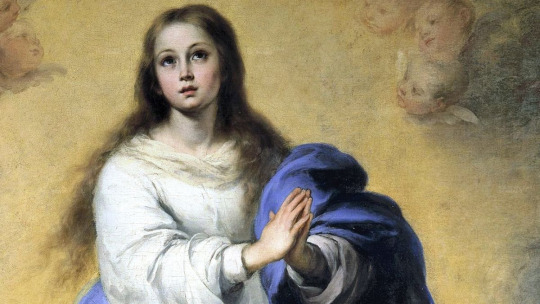
View On WordPress
#Anton Rafael Mengs#Bartolomé Esteban Murillo#Guido Reni#Ludwik Maria Grignion de Montfort.#Muzeum Prado#Niepokalana#Ojciec Maksymilian Maria Kolbe#Peter Paul Rubens#święta Katarzyna Laboure
0 notes
Photo

A arquiduquesa María Teresa de Austria, de Anton Rafael Mengs (1771)
1 note
·
View note
Text
Palladio - Giulio Argán
Investigación individual
Fichas: Otras Obras y Autores
Francesco Milizia
Fue un italiano conocido como teórico de la arquitectura y tratadista durante alrededor de los años 1730 y 1790. Es considerada uno de los principales autores que teorizó el neoclasicismo en su primera fase a través de sus escritos. Es conocido principalmente por sus tratados estético-críticos, entre los que destacan: Sobre el arte de ver en las bellas artes (1781) y Diccionario de las bellas artes del dibujo (1797). Abogó por imitar las obras maestras del arte griego antiguo, sobre la base de que los artistas de esa época habían podido inspirarse en una naturaleza y una sociedad aún no corruptas.

Vidas de arquitectos
Consta de cuatro libros: el primero es un resumen de la arquitectura y el segundo, el tercero y el cuarto fueron la parte histórico-biográfica de la obra, esta última subdividida a su vez en arquitectos antiguos (desde la decadencia de la arquitectura hasta su restablecimiento, es decir, siglo IV al siglo XV) y arquitectos del «restablecimiento» (arquitectura de alrededor del siglo XV, hasta el XVIII)

Winckelmann
Fue un alemán que destacó por ser Arqueólogo e historiador de arte. Es considerado el pionero de la arqueología moderna y del gusto neoclásico. En el año 1755 publicó su primera obra, un ensayo titulado Gedanken über die Nachahmung der griechischen Werke in der Malerei und Bildhauerkunst (Reflexiones sobre la imitación de las obras griegas en la pintura y la escultura). Se considera que fue el que inicio la arqueología como la conocemos hoy en día
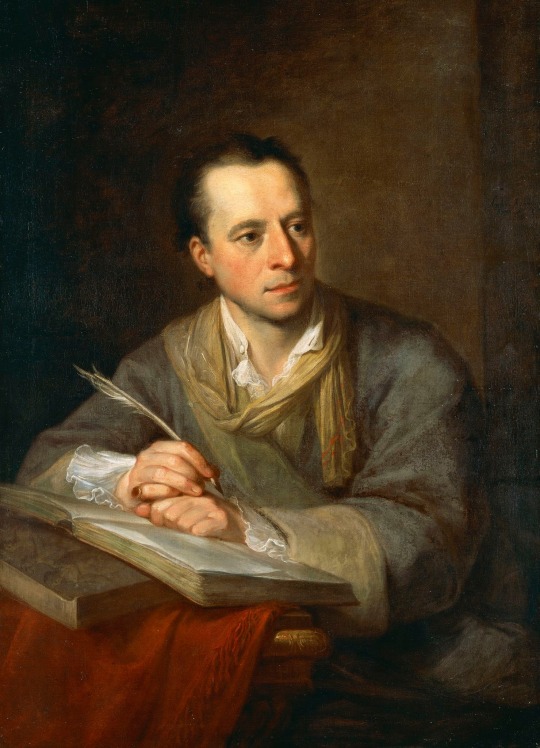
Mengs
Fue un pintor y tratadista checo, el más destacado del primer neoclasicismo. Su etapa de formación no sólo se orientó a las técnicas sino a la teoría del arte, que estaba en sus inicios como ciencia, abanderada por Johann Joachim Winckelmann, de quien fue alumno. En 1761 pintó, en el techo de la Villa Albani, en Roma, el fresco de El Parnaso, que se convirtió en una especie de manifiesto del neoclasicismo por su evidente empleo de soluciones tomadas de los maestros del Renacimiento, en particular de Rafael.
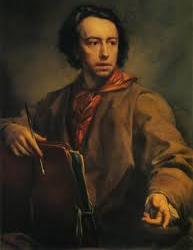
Wölflin
Fue un historiador de arte Suizo. fue catedrático en las universidades de Basilea, Berlín, Munich y Zurich, y uno de los estudiosos más influyentes en la moderna historia del arte. Además, conocido como uno de los máximos representantes del formalismo. Algunas de sus obras más destacada fueron Conceptos fundamentales para la historia del arte (1915), Renacimiento y Barroco (1888) y El arte clásico (1899).

León Battista Alberti
Arquitecto, teórico del arte y escritor italiano, fue además un peta, filósofo y organista. Estudio las leyes de la perspectiva que había desarrollado Brunelleschi. En su tratado Della Pittura (1436), explica estas leyes que serían fundamentales para la pintura de su época. Fue, con Leonardo da Vinci, una de las figuras más representativas del ideal del hombre del Renacimiento

Paolo Veronese
Fue un Pintor italiano. Uno de los tres grandes maestros de la pintura veneciana en la segunda mitad del siglo XVI, junto con Tiziano y Tintoretto. Se concidera que fue la figura principal del Manierismo veneciano y casi podríamos considerarlo un artista prebarroco. Era gran amigo de Palladio y otros grandes arquitectos de la época, por lo que se fijaba en el entorno donde reposarían su pinturas. Esto lo hace precursor de la pintura decorativa barroca.

Referencias Bibliográficas
Anton Raphael Mengs - 87 obras de arte - pintura. (s. f.). www.wikiart.org. https://www.wikiart.org/es/anton-raphael-mengs
Biografia de Anton Raphael Mengs. (s. f.). https://www.biografiasyvidas.com/biografia/m/mengs.htm
Biografia de Heinrich Wölfflin. (s. f.). https://www.biografiasyvidas.com/biografia/w/wolfflin.htm
Biografia de Johann Joachim Winckelmann. (s. f.). https://www.biografiasyvidas.com/biografia/w/winckelmann.htm
Biografia de Leon Battista Alberti. (s. f.). https://www.biografiasyvidas.com/biografia/a/alberti_leon.htm
De Enciclopedias, R. (s. f.). Las vidas de los más célebres arquitectos de todas las naciones y de todo tiempo, Francesco Milizia | Crítica de libros. https://www.criticadelibros.com/sin-clasificar/las-vidas-de-los-mas-celebres-arquitectos-de-todas-las-naciones-y-de-todo-tiempo-francesco-milizia/
De La Oliva Estrella Moreno Y Otros, V. M. M. E. R. C. (s. f.). Biografía de Johann Joachim Winckelmann (Su vida, historia, bio resumida). https://www.buscabiografias.com/biografia/verDetalle/5788/Johann%20Joachim%20Winckelmann
De La Oliva Estrella Moreno Y Otros, V. M. M. E. R. C. (s. f.). Biografía de Leon Battista Alberti (Su vida, historia, bio resumida). https://www.buscabiografias.com/biografia/verDetalle/6528/Leon%20Battista%20Alberti
Francesco Milizia - frwiki.wiki. (s. f.). https://es.frwiki.wiki/wiki/Francesco_Milizia
MCNBiografias.com. (s. f.). Milizia, Francesco (1725-1798). » MCNBiografias.com. https://www.mcnbiografias.com/app-bio/do/show?key=milizia-francesco
Mengs, Anton Rafael - Colección. (s. f.). Museo del Prado. https://www.museodelprado.es/coleccion/artista/mengs-anton-rafael/bcd5ee4e-bcc3-472b-a832-a4800279e0e0
Montejo, L. (2023, 17 mayo). Los conceptos fundamentales del arte según Heinrich Wölfflin. Hojas de acanto. https://www.hojasdeacanto.com/post/conceptos-fundamentales-de-la-historia-del-arte
Paolo Veronese. (1528). HA! https://historia-arte.com/artistas/paolo-veronese
0 notes
Photo
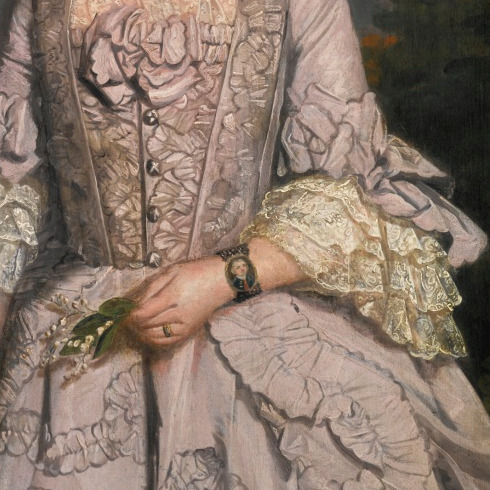
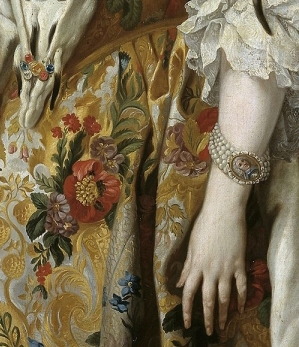
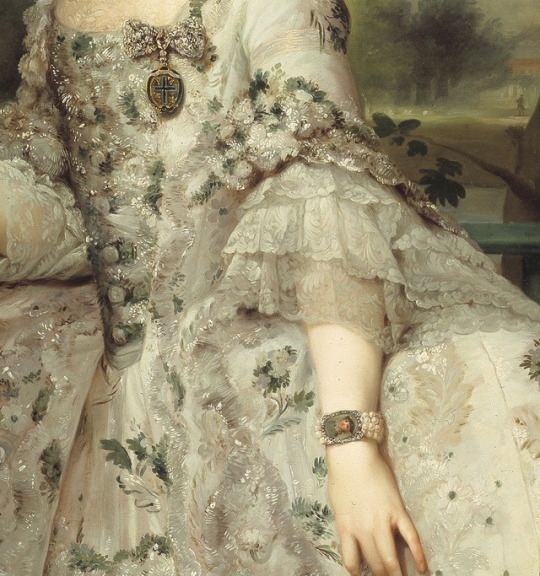
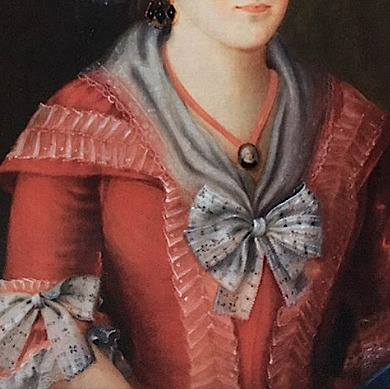
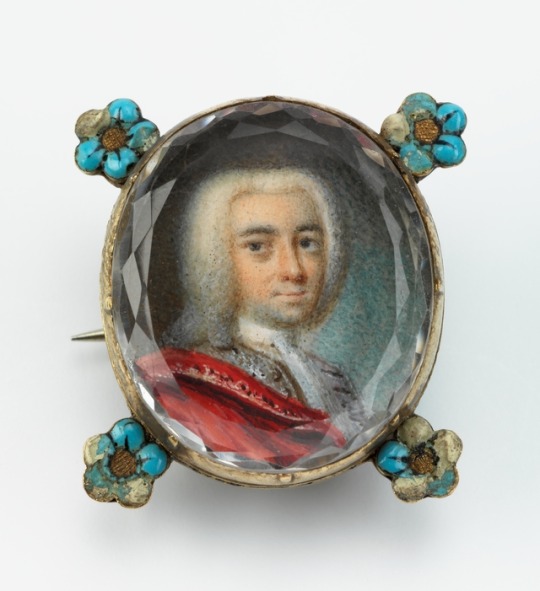


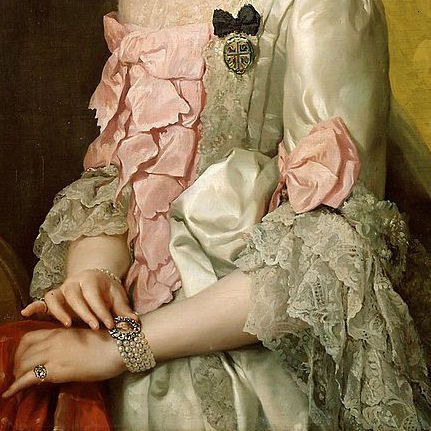

Miniature portrait as jewellery in 18th century portraits
Grace Newman, painted by Thomas Beach between 1770 and 1790. She wears a portrait of her husband John Newman. From Sotherby’s.
Isabel de Farnesio, queen consort of Spain, painted by Louis-Michel van Loo ca. 1739. From Prado, Madrid.
Maria Luisa de Parma, painted by Anton Rafael Mengs ca. 1765. From Prado, Madrid.
Maren Christine Holbye, painted by Peder Aadnes ca. 1786. She wears the portrait of her husband, vicar Poul Christopher Holbye, around her neck. From Blomqvist Auctions.
Portrait of Johan Georg Büchler, 1750s. The miniature portrait is mounted on a brooch with blue forget-me-nots. From The National Museum in Oslo, originally belonging to Helene Cathrine Büchler, his daughter.
Catherine Vedastine von den Driesch, painted by an unknown French painter in the 1770s. She wears a miniature portrait of her husband Louis Claude de Bretteville. From The National Museum in Oslo.
Elisabeth de Badorot, Countess de Saint Germain, painted in the 1770s by an unknown French artist, though I believe this is a newer copy. She wears a portrait of her husband on the wrist. Sold on eBay.
Maria Luisa de Bourbon, painted by Anton Raphael Mengs ca. 1764. It was made as an engagement portrait, and the miniature on the bracelet shows her fiancé Leopold, Grand Duke of Tuscany. From the Kunsthistorisches Museum in Vienna.
Unknown Italian lady, painted in the 1780s by an unknown Italian (possibly Venetian) master. From Walter’s Art Museum, Baltimore.
Judging from this and from other portraits I have seen, wearing the miniature portrait as a bracelet, and preferably on a pearl bracelet, seems to have been much in fashion. But as shown here, it could also be worn around the neck, on a chain, or as a brooch. The important thing was to display the loved one to the world, and yet wear the portrait on an intimate place near the chest or wrist.
#miniature portrait#brooch#bracelet#historical jewelry#rococo fashion#historical fashion#18th century fashion#forget me not#john newman#louis michel van loo#anton rafael mengs#peder aadnes
427 notes
·
View notes
Photo

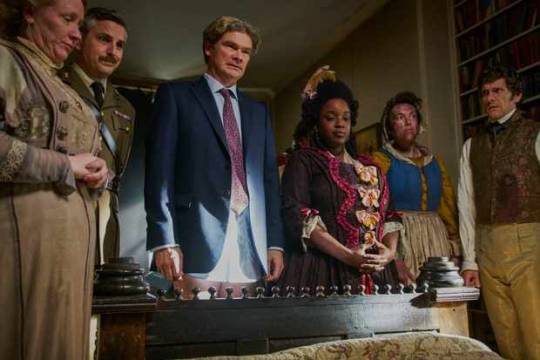


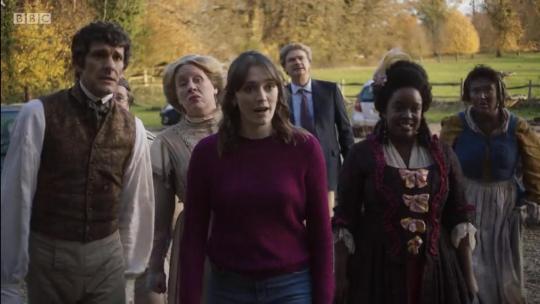
Costume Analysis: Kitty, from BBC Ghosts.
Show: BBC Ghosts, Series 1.
Character: Kitty, played by Lolly Adefope.
Costume Design: Lucy Williams.
Set: 18th century England (for this particular character)
Yeii!! The long awaited and asked for post about Kitty IS FINALLY HERE. I’m so sorry for the wait XD I just wrote and lost this post so many times that I just could not post it properly! Sorry!
ANYWAY, let’s start with saying that Lolly Adefope is PERFECT in this role: she sweet and hilarious. Love her.
Now, let’s take a look at her general look: she’s wearing a purple robe à l’anglaise, with an open front, matching stomacher, and contrasting petticoat. The decorations on the gown match the petticoat, so it’s a nice colour play to see on the screen. She shows the lace engageantes (cuffs) coming out of the sleeves, and wears a semi-sheer fichu to cover her cleavage.
Thanks to the robes à l’anglaise and à la française post we all know that the front of Kitty’s dress could look different, but the chosen option is perfectly ok, and we also know that this dress evolved from the mantua with its back fitted with pleats) and became a very English gown, so the choice works great (even though I live for a French gown, this was the right choice). Judging by the gown’s silhouette and the hairstyle, Kitty died sometime in the 1760s or early 1770s.
That being said, let’s take a look at some more detailed takes (I might be too picky, sorry) about this whole outfit that I find odd and would like to change:
The fit. Somehow it looks that this dress is not structured enough nor fit properly for the actress, just looking at the way that the shape of her breasts is visible on the sides, or the way that the front curves inward at the top of the stomacher, is really weird. I really REALLY hope that the body shape of Lolly Adefope was not an excuse for this shitty fit because SHE PERFECT, OK? Now, What would I do? I’d lower the neckline of the stomacher to give the gown a more accurate feel for the 18th century, and keep the fichu covering the skin. I’d add fully boned stays to give the torso de proper conical shape, and (bigger) panniers to create the more striking contrast that is characteristic of the 18th century silhouette.

The trims. The trims are ridiculously small. The 18th century was all about go big or go home, so why do I see pleated satin RIBBON as the zig-zaging decoration of the torso, VERY small bows for the stomacher, and ridiculously tiny bows on the cuffs? WHY?!
As a fashion designer, you are to give balance to the garment, and of course to the garment ON a particular person. So, instead of the pleated ribbon, I’d let the big vertical pleats of the front to show themselves (I think they look pretty!), I’d make big bows of the same fabric for the stomacher, add a big ruffle on the sides of the front opening of skirt of the gown, and eliminate the cuff bow and just let the cuff show its pleats. I personally prefer everything on the same fabric, but if the camera reads better a contrasting petticoat and trims, go for them! JUST MAKE THEM BIGGER. I’d take the front of this dress as an inspiration:
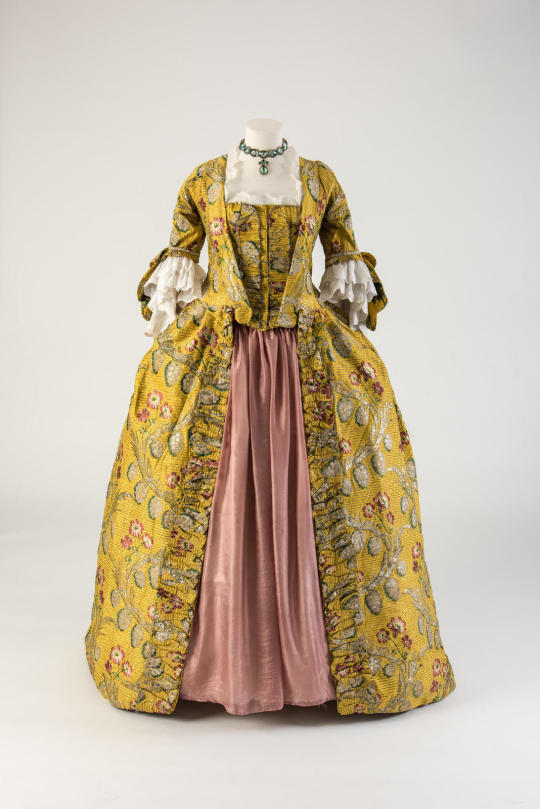
Robe à la française, 1760s, Fashion Museum Bath.
The fabric. For a spectacular 18th century gown, the fabric is VERY important, especially if a brocade is going to be used. The purple fabric on this gown is small and kind of sad, since 18th century brocades tend to have bigger and/or contrasting motives. So, If a wonderful fabric is not to be found, I would stick to plain taffeta, since it looks great, is accurate, there are many colours to choose from, it’s very noble to sew, holds the shapes perfectly, all pleats look great, and (important for costume design), it can be found in several price points.
I perfectly understand the choice of avoiding any flashy fabrics or colours for Kitty (given her character), so I get the lack of colourful brocade, painted silk or stripes, so the right choice would be plain taffeta if a good brocade of a single colour is not found. Here some brocade ideas:

robe à l’anglaise, ca. 1747, altered 1770s // robe à l’anglaise, 1750-75 // robe à l’anglaise, ca. 1770 // robe à l’anglaise, 1740-60 // all British, all from The Metropolitan Museum of Art
The cuffs. I don’t hate the cuffs of the dress, and I like that they match the pleats of the open front, but I’d add a second row for the lace cuffs. It looks poor, or too small for the outfit.
Finally, let’s jump to beauty:
Hair. I LOVE THE HAIR. And I love that they used the natural texture of Black hair for the hairstyle (I think that the front puff is her hair and the rest is not, since the colour is different). Making her to wear a full wig with a hairstyle clearly referenced on White people’s hair would have been an easy (and lazy) choice, so I’m very happy they didn’t. They took good note of the choices made in Belle (2013) with Gugu Mbatha-Raw’s hairstyles, and made it work for Lolly Adefope curlier and shorter hair.
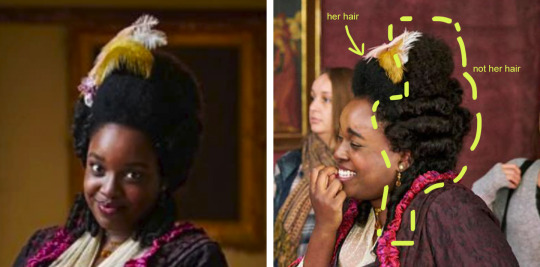
Now, the secret for the death date of Kitty I give above is mostly her hairstyle, which is clearly from the 1760s or the first part of the 70s (before they went crazy with the size and height of hair). During the 1760s, the hair began to get higher (being about ¼ or ½ the length of the face), and it was styled in a relatively simple way in an egg shape an added a few decorations, like ribbons, pearls, flowers and feathers.
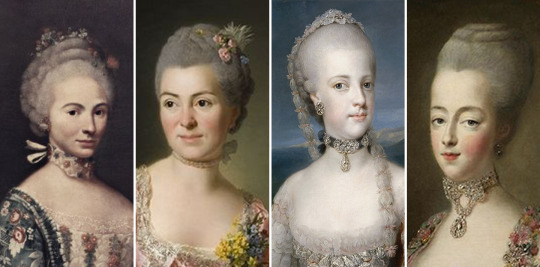
Portrait of a woman, ab. 1760-1780, Alessandro Longhi // Marie Suzanne Giroust Roslin,1770, Alexander Roslin // Maria Carolina de Habsburgo-Lorena, 1768, Anton Rafael Mengs // Portrait of Marie Antoinette, 1773, François-Hubert Drouais
Makeup. The makeup is clearly thought to appeal to a modern audience, so it’s pretty natural and rosy, which works for the character and the overall look of the show. Would I prefer a more accurate and extreme make? Not really? It doesn’t look like Kitty died during a party night or something like that, so having her with minimal makeup makes sense, and also the historical makeup would totally change the perception we as audience have of Kitty, since it’s much more exaggerated than our modern makeup.
------------------------------------------------------------------------------------------
So, what do you all think? Was a little too picky? I mean, I hope I didn’t become one of those anal people who demand historical accuracy in media that is not required to. I try (with all my costume critiques) to step into the mind and work of a costume designer and improve the costumes through those lenses.
Thinking about what the costumes are for (tell us about the character, define the character aesthetic as an individual and within the show, set the time and place), the costume design of the show do all those things in a proper manner, so I think we can play and get a little picky with the details and how much we would like to make the show look better :)
Thank you for coming to my TEDtalk.
Let me know your comments in a reblog or comment or ask or message XD
#kitty#18th century#costume critique#ghosts#bbc ghosts#thank you for coming to my TED talk#long post#is became a REAL long post#lol#1760s#1770s#robe à l'anglaise#english gown#drama#costume drama#costume comedy#actually#lolly adefope#costume design
209 notes
·
View notes
Photo

‘SERIA LUDO’ (looking at serious subjects in a playful manner) is something of which I greatly approve. It was a policy adopted by the Society of Dilettanti in the 18th century, young aristocrats on the Grand Tour in search of the Antique in Italy. Thomas Patch parodied them in his ‘A Gathering of Dilettanti around the Medici Venus’ which I was delighted to discover on long-term loan to Basildon Park as part of the collection of Sir Brindsley Ford, the great Grand Tour scholar whose papers are now at the @paulmelloncentr . The star piece is the wonderful Pompeo Batoni portrait of Humphry Morice resting like a poet in the landscape in the Vatican Gardens with his hounds (he was an animal lover who left £600 in his will for his horses and hounds). The pose is echoed in a portrait of Ford by Alec Cobbe (whom I incidentally visited a couple of weeks ago at Hatchlands park). There are also drawings by Tiepolo, paintings by Richard Wilson, and others such as Giovanni Batista Busiri, Serafino Cesaretti and Anton Rafael Mengs. It also includes a portrait of the Byres family by Franciszek Smuglewicz. In 1778 Philip Yorke wrote of how Byres varied his site-seeing according to the weather: “Antiquities and ruins when fine, statues and palaces when wet, and if it should be a clear say but unpleasantly windy we see pictures.” #grandtour #basildonpark #pompeobatoni #sirbrindsleyford #brindsleyford #thomaspatch (at Basildon Park - National Trust) https://www.instagram.com/p/CRwnhKRlANz/?utm_medium=tumblr
5 notes
·
View notes
Photo
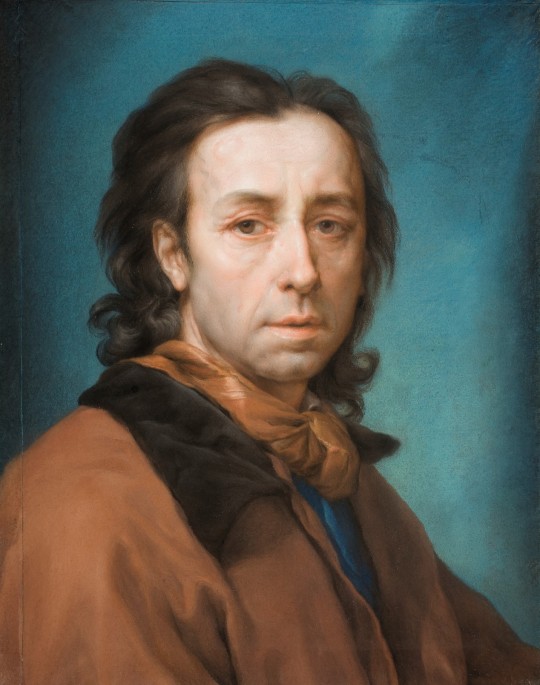
Anna Maria Teresa Mengs (German, 1751 - 1792): Anton Rafael Mengs (via Museo del Prado)
#Anna Maria Teresa Mengs#german painters#women painters#women artists#portrait#pastel drawing#art#eighteenth century
72 notes
·
View notes
Text
El traje masculino “a la francesa”
El traje masculino “a la francesa”
La llegada de los Borbones al trono español en la persona de Felipe V trajo consigo una serie de cambios sociales de todo tipo. Uno de los más visibles fue la manera de vestir, que se vio sustancialmente modificada. El atuendo masculino que se denominó en España “a la francesa”, “a la moda” o “a lo militar” constaba básicamente de tres piezas: casaca (justacorps), chupa (veste) y calzones…
View On WordPress
#Anton Rafael Mengs#Antonio María Esquivel.#Gerard Depardieu#Gerard Terborch#Jacques Laumosnier#Jan van Noordt#Milos forman#Nicolas de Largilliere#ranc
0 notes
Text
El traje masculino “a la francesa”
El traje masculino “a la francesa”
La llegada de los Borbones al trono español en la persona de Felipe V trajo consigo una serie de cambios sociales de todo tipo. Uno de los más visibles fue la manera de vestir, que se vio sustancialmente modificada. El atuendo masculino que se denominó en España “a la francesa”, “a la moda” o “a lo militar” constaba básicamente de tres piezas: casaca (justacorps), chupa (veste) y calzones…
View On WordPress
#Anton Rafael Mengs#Antonio María Esquivel.#Gerard Depardieu#Gerard Terborch#Jacques Laumosnier#Jan van Noordt#Milos forman#Nicolas de Largilliere#ranc
0 notes
Photo



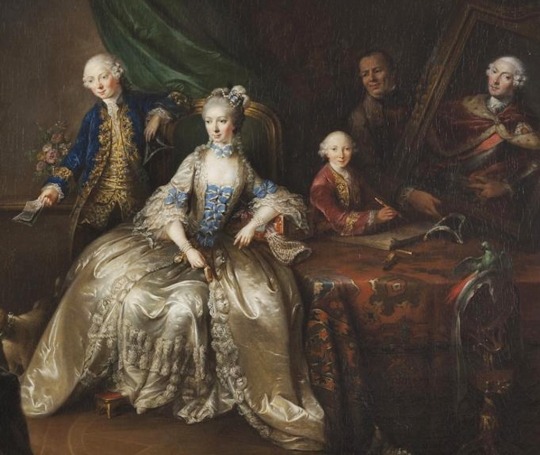


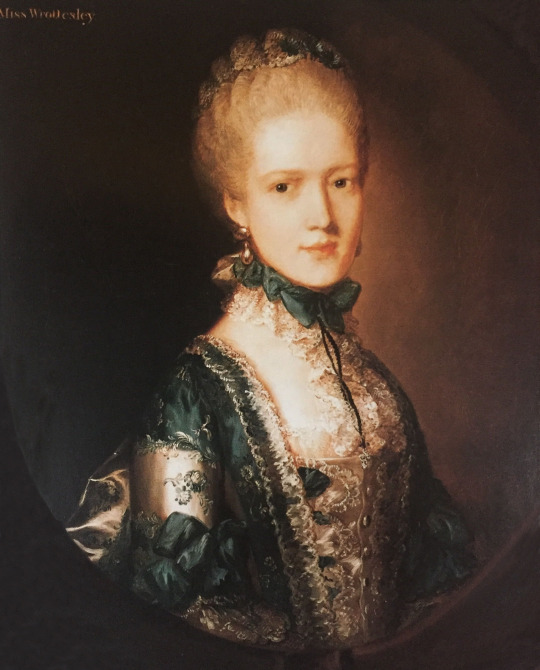
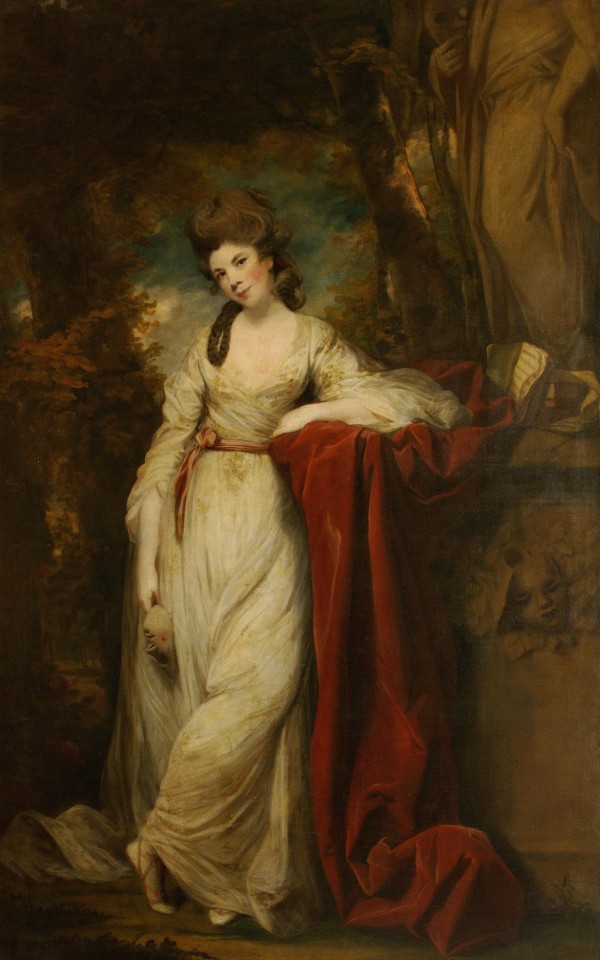
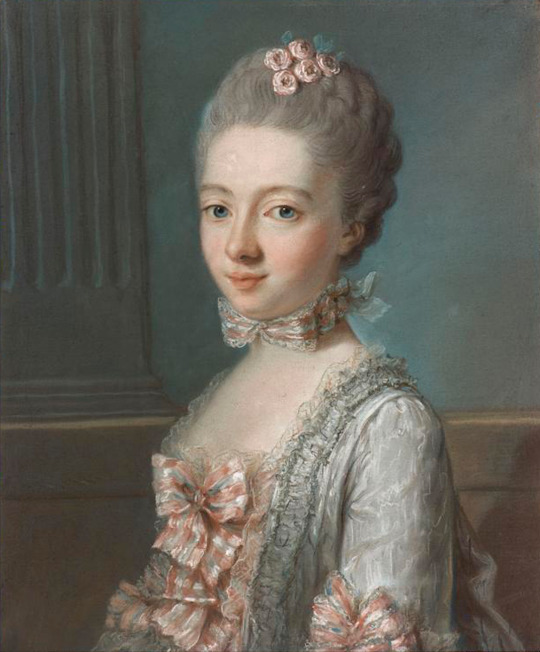
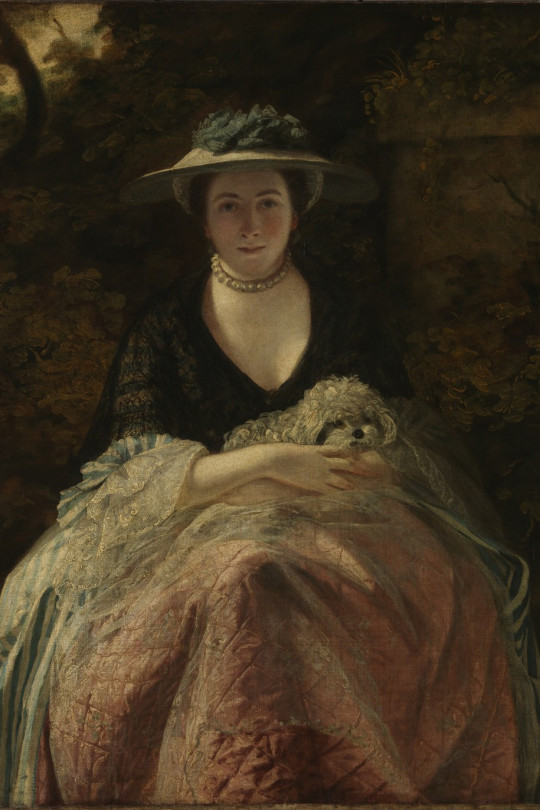
1764 Fashion -
Top: 1764 Infanta Maria Luisa by Anton Rafael Mengs (Kunsthistorisches Museum - Wien, Austria). From Animus Mirabilis' photostream on flickr; erased spots w Pshop 1146X1474 @72 585kj.
Second row left: 1764 Mary Anne Colmore by Francis Cotes (Worthing Museum and Art Gallery - Worthing, West Sussex. UK). From artuk.org 1496X1898 @72 4.1Mp.
Second row right: 1764 Lady Amelia Darcy, 9th Baroness Conyers by François Hubert Drouais (Bowes Museum - Durham, North East England, UK). From Wikimedia 1579X1899 @72 893kj.
Third row: 1764 Marianne Camasse, Countess of Forbach, morganatic wife of Christian IV by Johann Christian Mannlich (private collection). From Wikimedia; enlarged by half 1022X861 @96 235kj.
Fourth row: 1764 Mary, Countess of Howe by Thomas Gainsborough (Kenwood House - Hampstead, London, UK). From mfah.org/blogs/inside-mfah/characters-kenwood-mary-countess-howe 951X1350 @96 262kj
Fifth row left: 1764-1765 Elizabeth Wrottesley, later Duchess of Grafton by Thomas Gainsborough (National Gallery of Victoria - Melbourne, Victoria, Australia) Google Art Project via Wikimedia; blurred bacgrounf to erase cracks 3930X5152 @38 6.8Mj.
Fifth row right: 1764 Mary Wrottesley by Thomas Gainsborough (location ?). From pinterest.at/heritagerose/painting/; fixed lower left corner area and halfway up left side with Photoshop to remove a veiling reflection 2151X2669 @72 1.3Mj.
Sixth row: 1764 Mrs Abington as The Comic Muse, by Sir Joshua Reynolds (Waddesdon Manor - Waddesdon, Buckinghamshire, UK). From Wikimedia 2217X3537 @300 1.3Mj.
Seventh row left: 1764 Madame Lalive de Jully by Joseph Ducreux (Musée Antoine Lécuyer - Saint-Quentin, Aisne, Hauts-de-France, France) photo - Mathieu Rabeau. From Réunion des Musées nationaux Web site; enlarged to fit screen 2380X2872 @144 7.1Mp.
Seventh row right: 1762-1764 (between) Miss Nelly O'Brien by Sir Joshua Reynolds (Wallace Collection - London, UK). From wsimag.com/wallace-collection/artworks/58035 915X1173 @300 427kj.
#1764 fashion#Rococo fashion#Louis XV fashion#Georgian fashion#Infanta Maria Luisa#Anton Rafael Mengs#Mary Anne Colmore#Francis Cotes#Amelia Darcy#François-Hubert Drouais#Marianne Camasse#Johann Christian Mannlich#Mary - Countess of Howe#Thomas Gainsborough#Elizabeth Wrottesley#Mary Wrottesley#Mrs Abington#Joshua Reynolds#Madame Lalive de Jully#Joseph Ducreux#nelly o'brien
21 notes
·
View notes
Photo
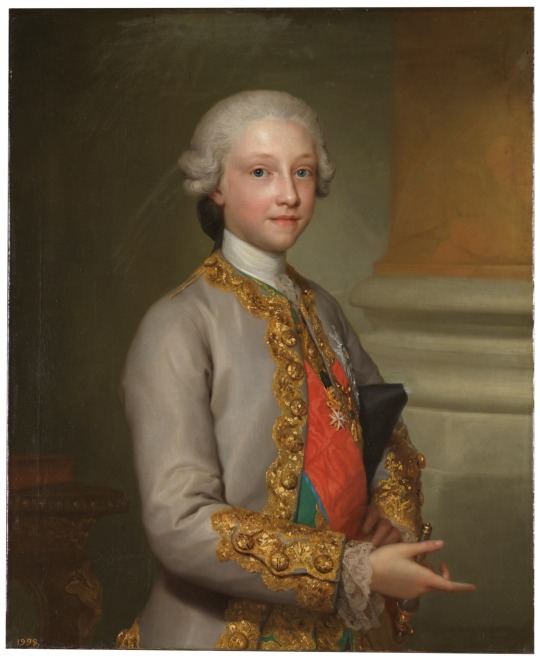
O infante don Gabriel de Borbón, fillo predilecto de Carlos III, por Anton Rafael Mengs (1767)
22 notes
·
View notes
Photo

Anton Raphael Mengs: La Escuela de Atenas, basado en Rafael Sanzio (1755).
7 notes
·
View notes
Photo
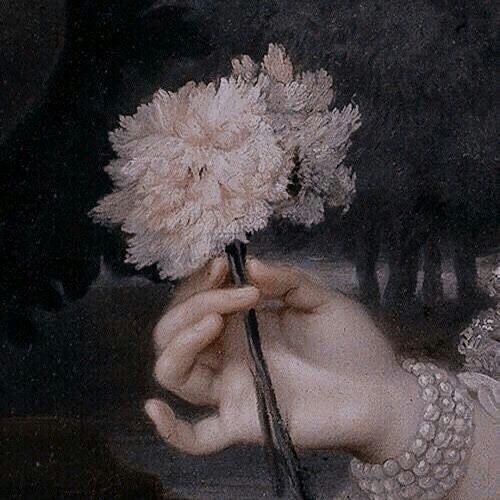
Maria Luisa of Parma by Anton Rafael Mengs ca.1765 #painting #parma #AntonRaphaelMengs #oilpainting #Neoclassicism #hand #marialuisaofparma https://www.instagram.com/p/CM9mY9OBjMU/?igshid=13w92xsscdr8t
0 notes
